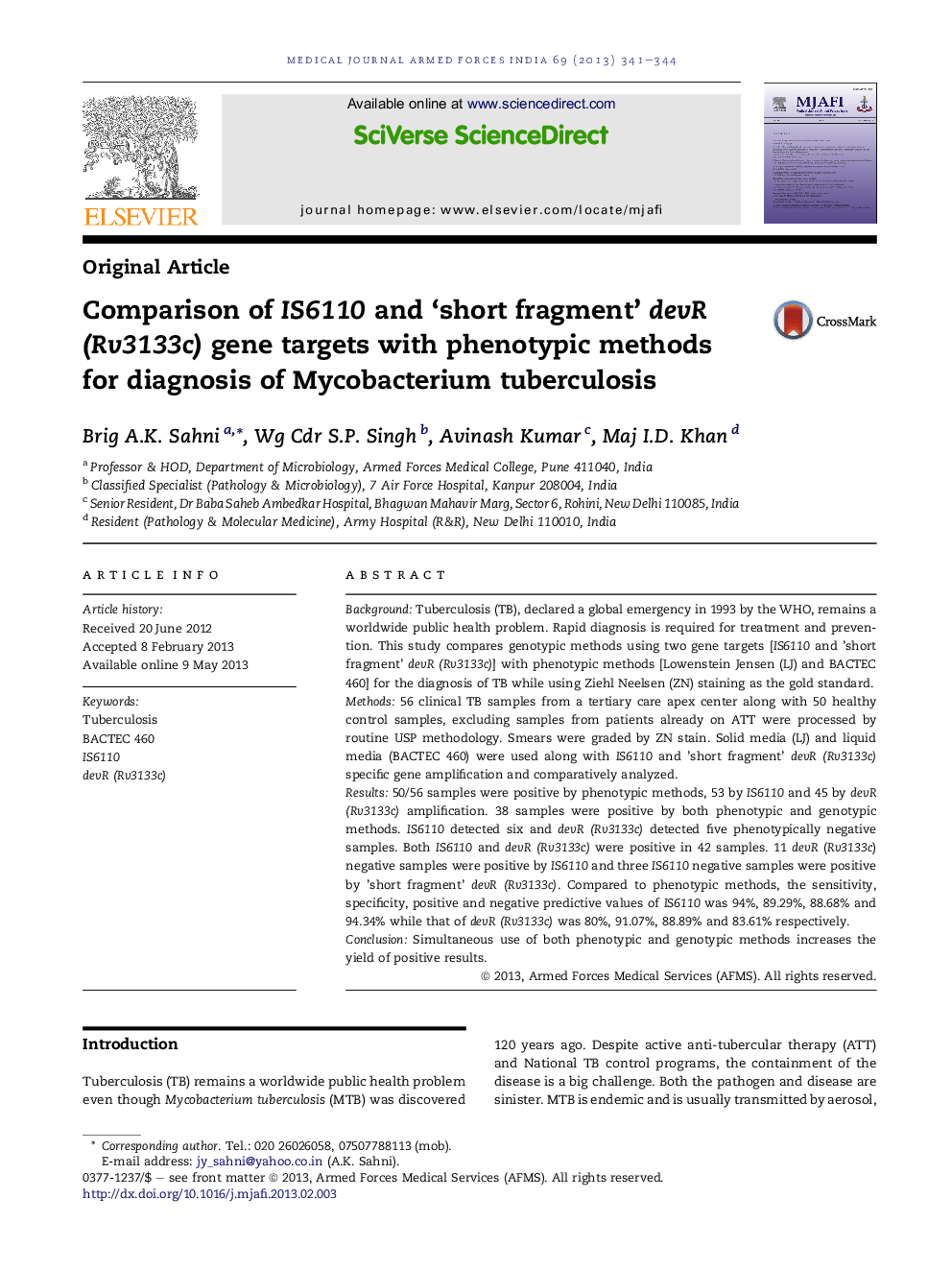| Article ID | Journal | Published Year | Pages | File Type |
|---|---|---|---|---|
| 3161582 | Medical Journal Armed Forces India | 2013 | 4 Pages |
BackgroundTuberculosis (TB), declared a global emergency in 1993 by the WHO, remains a worldwide public health problem. Rapid diagnosis is required for treatment and prevention. This study compares genotypic methods using two gene targets [IS6110 and 'short fragment' devR (Rv3133c)] with phenotypic methods [Lowenstein Jensen (LJ) and BACTEC 460] for the diagnosis of TB while using Ziehl Neelsen (ZN) staining as the gold standard.Methods56 clinical TB samples from a tertiary care apex center along with 50 healthy control samples, excluding samples from patients already on ATT were processed by routine USP methodology. Smears were graded by ZN stain. Solid media (LJ) and liquid media (BACTEC 460) were used along with IS6110 and 'short fragment' devR (Rv3133c) specific gene amplification and comparatively analyzed.Results50/56 samples were positive by phenotypic methods, 53 by IS6110 and 45 by devR (Rv3133c) amplification. 38 samples were positive by both phenotypic and genotypic methods. IS6110 detected six and devR (Rv3133c) detected five phenotypically negative samples. Both IS6110 and devR (Rv3133c) were positive in 42 samples. 11 devR (Rv3133c) negative samples were positive by IS6110 and three IS6110 negative samples were positive by 'short fragment' devR (Rv3133c). Compared to phenotypic methods, the sensitivity, specificity, positive and negative predictive values of IS6110 was 94%, 89.29%, 88.68% and 94.34% while that of devR (Rv3133c) was 80%, 91.07%, 88.89% and 83.61% respectively.ConclusionSimultaneous use of both phenotypic and genotypic methods increases the yield of positive results.
